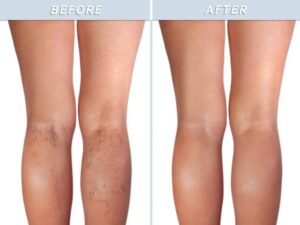Posts in Category: Health News
Orthotics Adelaide: Orthotics For Your Feet
Orthotics are a tool to help with many foot and leg conditions. They provide support, cushioning and biomechanical correction. Athletes often use them.
Custom orthotics are designed based on the podiatrist’s assessment, gait analysis and 3D laser precision scan. These are then directly milled using cutting-edge Australian technology from various rigid and soft materials. For more custom orthotics Adelaide, click here.
Orthotics are designed to fit your feet
Orthotics are medical devices that fit comfortably into shoes and are designed to help support, align and improve the function of your feet. A podiatrist usually prescribes them, customised to your feet using digital scans and moulds. They are generally more effective than over-the-counter shoe inserts and can treat many foot conditions.
 They are also often used with other treatment modalities like stretching exercises and foot mobilisation. They reduce and redistribute the forces that flow through your feet, which decreases damaging overuse and fatigue while helping to promote healthy movement patterns and offload sites of injury.
They are also often used with other treatment modalities like stretching exercises and foot mobilisation. They reduce and redistribute the forces that flow through your feet, which decreases damaging overuse and fatigue while helping to promote healthy movement patterns and offload sites of injury.
Orthotics are available in various materials such as foam, leather and memory foam to suit each patient’s unique needs. They are manufactured locally in Adelaide using a combination of your prescription and 3D laser scanning. They are then directly milled from a variety of rigid and soft materials. These orthotics are an excellent solution for painful flat feet, foot pain, or uneven shoe wear.
They are a non-invasive treatment
Orthotics are foot-shaped insoles that correct how your feet function and change the force applied to the bones and joints of the lower leg and foot. They are commonly called arch supports, shoe inserts or custom-made orthotics. They are available over-the-counter (OTC) or custom fabricated. They are used for various conditions to reduce pain and redistribute the load. For more custom orthotics Adelaide, click here.
They strengthen the muscles of your feet and ankles and can increase circulation, which decreases swelling and improves overall comfort. They can also help with bunions and other foot deformities and reduce pressure and pain.
Our podiatrist will assess your feet to determine the type of orthotics you need. The assessment includes photographs of your feet, gait analysis and a 3D laser precision scan. The orthotic design is matched to your feet using the latest CAD cam software and then directly milled from various rigid or soft materials.
They are a long-term solution
Custom orthotics are an ideal long-term solution for foot and knee problems. They help improve function, balance, weight distribution and alignment of the lower limbs, reducing pain and enhancing quality of life. They also prevent the progression of painful conditions such as osteoarthritis.
Unlike arch supports and shoe insoles, custom orthotics are specifically crafted for the unique shape of your feet and lower leg. Moreover, they are made of superior materials such as polyamide 11 (better known as nylon) and polypropylene. They also provide a strong base for your feet so you can wear them comfortably in almost any shoe.
A bespoke pair of custom orthotics can significantly reduce the need for surgery, medication and other costly treatments. They are also more effective than off-the-shelf orthotics, which may not provide the desired results. Consequently, they are worth the investment. They will alleviate pain and discomfort from common ailments, such as shin splints, flat feet, bunions, neuromas, corns, and calluses. For more custom orthotics Adelaide, click here.
They are a good investment
Custom orthotics can offer lasting relief if you suffer from heel pain caused by plantar fasciitis. They can also help reduce the forces exerted on your feet, ankles, knees, and hips.
Orthotics are not cheap, but they’re a good investment for your health. They’re designed to treat your foot problem and save you from having more injuries in the future. Unlike over-the-counter orthotics, available only in shoe sizes, custom orthotics are made to fit your shoes.
In addition to providing cushioning, custom orthotics can help heal Achilles tendinitis and prevent the condition in the first place. These insoles can also be helpful for people prone to foot pain, such as those with flat feet or high arches.
They can also improve athletic performance by increasing power transfer to the crank. Podiatrists use a laser scanner to create 3D orthotics personalised to the wearer’s foot and ankle alignment. This approach is more expensive than OTC orthotics but provides better results.
Sports Physio Adelaide: Sports Physio Perks
Specialists in sports physiotherapy are trained to manage the injuries resulting from various physical activities. Their specialized sports physio Adelaide services are aimed at athletes of all ages and levels of competition.
Sports physiotherapists design efficient workout programs to build an athlete’s strength and minimize the risk of injuries. These exercises will also enhance a player’s flexibility, which can reduce the risk of sprains and stretched ligaments.
Injury prevention
 Injury prevention is one of the most important aspects of a sports physiotherapy practice. Injuries can be caused by many factors, both within and outside the sporting environment. Growing scientific evidence identifies the modifiable risk factors of injury, which can be addressed with a specialised approach. It may involve load monitoring and management, diet/nutrition advice or more technical analysis, e.g. running re-training.
Injury prevention is one of the most important aspects of a sports physiotherapy practice. Injuries can be caused by many factors, both within and outside the sporting environment. Growing scientific evidence identifies the modifiable risk factors of injury, which can be addressed with a specialised approach. It may involve load monitoring and management, diet/nutrition advice or more technical analysis, e.g. running re-training.
The goal of injury prevention is to reduce the incidence of unintentional injuries, which include poisonings, spinal cord and traumatic brain injuries, car accidents, falls, drownings, firearm-related incidents, and recreational and sports-related injuries. Intentional injuries, including those caused by intimate partner violence, homicide and suicide, are also preventable.
Typically, sports physiotherapists work one-on-one with their clients. They must be skilled at building rapport and gaining their confidence to provide the best advice possible. They must also be able to communicate complex health information in an easy-to-understand way. Additionally, they must regularly reassess the patient to ensure that their treatment program aligns with their evolving needs and brings them closer to their performance goals.
Injury management
A specialized sports physio Adelaide can help you manage your injury, avoid further damage and ensure proper healing. They can use heat or cold treatments, taping specific body zones, hands-on treatment and dry needling to ease or calm pain. They can also advise on specific sport-related equipment, such as shoes for runners or knee ligaments for basketball players, that are made with qualities and designs that prevent injury.
In addition to treating sports injuries, a specialized sports physiotherapist can identify any underlying issues contributing to an injury and develop an action plan to address them. It can include assessing training techniques, warm-up routines, and biomechanical imbalances. By identifying and addressing these underlying issues, sports physiotherapists can minimize the risk of future injuries and enhance overall performance.
Performance enhancement
Athletes spend countless hours training and perfecting their physical skills. However, they may receive very little competent training in developing their psychological skills, which is essential for success. These include goal setting, self-talk, purposeful practising, visualization, concentration, and focus.
Specialized sports physiotherapists can help athletes with performance enhancement by evaluating their neuromuscular and cardiovascular-pulmonary systems. They then develop a plan of action to optimize the athlete’s performance. Typically, this involves assessing the athlete’s strengths and weaknesses to identify the areas that need improvement. They can then create a training program to address these issues and coach the athlete.
Depending on the athlete’s goals, their treatment may involve a range of therapies. For example, sports massage can pinpoint muscle issues and release tense tissues that could lead to poor performance. In addition, this therapy can also improve the athlete’s range of motion and reduce muscle soreness after competition.
Rehabilitation
Whether you are an elite athlete or just starting your journey, sports physiotherapy can help you achieve your goals. It can help you avoid injury, make a speedy recovery and improve your athletic performance. It also helps you to bridge the gap between your potential and peak performance.
Rehabilitation is a multifaceted process that includes education, therapy and self-management. This type of care is significant in patients with long-term illnesses or conditions, such as diabetes, COPD and cancer. It can also be used to treat musculoskeletal conditions.
A key part of the rehabilitation process in Adelaide specialized sports physio involves identifying and eliminating risk factors contributing to injury. It can be done using various methods, including physical examinations and imaging technologies. A specialized sports physiotherapist can provide a personalized assessment and treatment plan. They may recommend a specific exercise program and a home health program.
Specialized sports physiotherapy can help you recover from sports injuries faster and return to your sport with full functionality. It also reduces the risk of future injuries. Moreover, promoting active participation and healthy lifestyles can improve your overall quality of life. It can also help you achieve your personal fitness goals. It also teaches you how to use equipment to maximize your athletic performance.
What Does a Chiropractor Do?
Chiropractor South Australia are healthcare providers trained to diagnose and treat spine, muscles, and joint pain. They usually collaborate with physicians, nurses and physiotherapists as part of a circle of care to provide optimal patient outcomes.
Chiropractors use spinal manipulation to ease neck pain and restore mobility, providing exercises and lifestyle advice.
Poor Posture
 Slouching is a widespread issue. Though poor posture might seem like just another minor annoyance that can be ignored, research shows it to be linked with neck pain, back problems, and even heart disease.
Slouching is a widespread issue. Though poor posture might seem like just another minor annoyance that can be ignored, research shows it to be linked with neck pain, back problems, and even heart disease.
As the main side effects of poor posture arise from shifting natural spinal curves and changing their natural curvatures, poor posture can place unneeded strain on upper and lower back muscles as it alters the natural curves of your spine. In time, this could even pinch nerves! Furthermore, poor posture may give an appearance of round shoulders and potbellies, forcing weight to shift toward the front of your frame and shifting weight toward one area instead of another.
Bad posture can also lead to incontinence, heartburn and poor digestion due to its compression of abdominal organs. In addition, slumping can impact breathing patterns and cause energy levels to drop considerably, potentially contributing to health complications.
Poor posture threatens knees, leading to misalignment and increased strain. Furthermore, poor posture may contribute to improper bite patterns, which impact jaw joints – this, in turn, affects temporomandibular joints – as well as leading to forward head positions which affect spinal muscle structures and eventually lead to slumping over time.
Car Accident Injuries
Car accidents are all too frequent and can result in injuries ranging from minor to severe, depending on the force and speed of travel during a collision. In addition, the severity of injuries often depends on which direction and speed the vehicle was travelling at when the crash occurred.
Some of the most severe car accident injuries include brain damage, spinal cord injury, fractures and disfigurement. Brain injuries may range from bruising and swelling to permanent impairment of brain functionality known as traumatic brain injury; spinal cord injuries may lead to symptoms including nerve damage, loss of mobility, chronic pain syndrome and lack of coordination; fractures and sprains are frequently experienced during automobile crashes.
Car accidents often result in more severe injuries, including herniated discs, whiplash and soft tissue damage. Herniated discs can be extremely painful and lead to long-term issues like weakness, numbness and depression; whiplash occurs when muscles, ligaments and tendons stretch and strain unnaturally during an accident – often rear-end collisions are responsible.
Uncommon injuries from car accidents include scrapes and bruises, usually due to broken glass, loose items from within the vehicle or debris on the road. Bruises may take time to heal as blood leaks beneath the skin into muscle tissue.
Joint and Muscle Pain
Painful joints like elbows and knees can be debilitating. For example, a knee comprises three bones (femur, tibia and fibula) held within its joint capsule (synovium) by ligaments and tendons cushioned by cartilage for support; muscles help protect these structures as they move through space.
Joint pain may be attributed to disease, overuse or age, injury or work-related activities, or a musculoskeletal disorder that affects muscles, tendons, nerves, ligaments and joints, leading to reduced movement, pain and fatigue. Musculoskeletal disorders have long been identified as a primary source of joint discomfort due to their potential impact on mobility, range of motion loss and fatigue.
Doctors can identify the source of muscle and joint pain by taking a comprehensive medical history review and physical exam. They’ll ask when it first began and whether activity or rest makes the pain worse or better; additionally, they’ll investigate its impact on daily activities and how it might change over time.
Doctors can treat joint pain by combining medications and treatment techniques, including Tylenol or anti-inflammatory medicines such as Ibuprofen to alleviate discomfort. Other therapies, like glucosamine supplements, may also prove helpful.
General Health
Chiropractic is a primary contact health care practitioner (that doesn’t require a referral from your GP), which uses hands-on therapy to treat problems of bones, muscles and joints (known as the musculoskeletal system). Chiropractors are also skilled at providing exercise recommendations and nutritional, dietetic and lifestyle counselling services.
Your initial visit to a chiropractor South Australia typically involves an assessment that includes a thorough interview, physical exam and various diagnostic tests such as posture tests, muscle strength and range of motion assessments, and any necessary X-rays. Based on this evaluation process, they will formulate a working diagnosis and a tailored treatment plan for you.
An adjustment involves lying on a padded table while your chiropractor uses controlled force to manipulate your back and other areas with controlled manipulation, potentially producing cracking or popping noises. Chiropractors are trained in over 150 techniques, most relying on gentle manipulation.
Varicose Vein Treatment
Varicose veins are twisted, enlarged veins that protrude from the surface of your skin. They’re most common on the legs. Weak or faulty one-way valves cause them.
The first step in varicose veins treatment Adelaide is to have a medical exam. Your doctor will ask about any recent illnesses and other health problems. You should also tell your doctor about your medications, especially aspirin, ibuprofen (Advil, Motrin IB), or naproxen sodium.
Sclerotherapy
 Sclerotherapy, along with surgery and radiofrequency ablation, is one method for treating varicose veins. It is done in your doctor’s office and involves injecting a chemical (called a sclerosant) into the blood vessels to make them shrink.
Sclerotherapy, along with surgery and radiofrequency ablation, is one method for treating varicose veins. It is done in your doctor’s office and involves injecting a chemical (called a sclerosant) into the blood vessels to make them shrink.
Your doctor will mark the area for injections with ultrasound scanning. They will then inject the medicine into the vein under local anaesthetic. You will need several treatment sessions.
You may need to wear compression stockings after your procedure. Brown lines or spots on the skin may appear where the injections were injected, but these usually fade within a few months. You must also see your doctor a few weeks after the procedure and again several months later. This is to ensure that the treated varicose veins do not reopen.
Endovenous ablation
This minimally invasive ultrasound-guided procedure seals varicose veins without removing them. It is a quick and painless treatment for most patients. The treated vein will reabsorb naturally over time. You must avoid heavy exercise and lifting for one week after EVLA. The most common complication is thrombophlebitis, a small blood clot that forms in the affected vein. This is usually mild and responds to NSAIDs and compression hosiery. Occasionally the heat from the EVLA treatment can damage nerves alongside the varicose vein.
EVLT is much less invasive than ligation and stripping, the treatments of choice for years. This procedure is performed in your doctor’s office, and general anesthesia is not required. Symptoms associated with varicose veins improve immediately after the treatment, and they will disappear over time as the diseased veins are replaced by scar tissue.
Laser treatment
Laser treatment uses a narrow laser beam to obliterate unsightly veins on the surface of your skin. The body naturally absorbs the vein remnants, and you’ll notice results within a few weeks. To prepare for laser treatment, avoid wearing a tan and apply a skin-bleaching cream before the procedure.
Varicose veins are enlarged, twisted blood vessels that appear in the legs and have a bluish-purple discolouration. They develop when one-way valves in the veins fail to function correctly, causing blood to pool and pressure within the veins to increase.
Varicose vein treatment Adelaide can be treated with a variety of procedures. These include sclerotherapy and surgery, which can provide effective long-term outcomes. Sclerotherapy works best for small varicose veins. Surgery can be used to remove more prominent varicose veins.
Compression hosiery
Compression hosiery is a simple and inexpensive treatment for varicose veins and other circulatory problems. It helps improve blood flow to the leg muscles, preventing symptoms such as swelling and pain. It also reduces the risk of venous leg ulcers, which may require surgery to treat.
Hosiery is available in several styles, including knee-high and thigh-high stockings and pantyhose. Medical-grade stockings are typically prescribed by a doctor and provide more excellent compression. They are often covered by insurance. Patients should wash their stockings daily and check them for damage or irritation. They should also avoid rubbing or squeezing their legs while wearing them. They should also remove their stockings to allow the air to circulate correctly. They should also keep their socks clean and dry to prevent skin irritation.
Varicose veins are caused by faulty vein valves that prevent blood from flowing back to the heart. This leads to swollen and twisted veins that are often bluish. They can also cause painful symptoms such as aching, swelling and itching of the legs.
There are several different treatments for varicose veins, including sclerotherapy and endothermal ablation. A chemical is injected into the varicose vein during sclerotherapy to damage and scar it. This procedure usually works best for small varicose veins.
Varicose Vein Treatment Adelaide
Varicose vein treatment Adelaide involves several different procedures. Many over-the-counter supplements and home remedies claim to treat varicose vein symptoms, but they mask the condition rather than address it.
Varicose veins are enlarged and twisted vessels that have a bluish-purple discolouration. They develop when vein valves fail to work correctly.
Mobility Scooters – Choosing the Right Mobility Scooter
There are a variety of mobility scooters available on the market today. However, you must do your homework before purchasing to find the best mobility scooter. These scooters can be expensive, so you will want to ensure you get the best deal. It is especially important if you get a scooter for personal use. Fortunately, many websites can help you narrow down your search and help you find the suitable model for your needs.
Seat widths and depths
 There are many seat widths and depths for mobility scooters on the market. Some manufacturers offer various sizes, but knowing which one is right for you is essential. Aside from comfort, you also need to consider the weight of the person seated on the chair. It’s also a good idea to check your mobility scooter’s manual for more information. For more information about mobility scooters, click to see more here.
There are many seat widths and depths for mobility scooters on the market. Some manufacturers offer various sizes, but knowing which one is right for you is essential. Aside from comfort, you also need to consider the weight of the person seated on the chair. It’s also a good idea to check your mobility scooter’s manual for more information. For more information about mobility scooters, click to see more here.
Besides comfort, you must also consider how easily you can get in and out of the seat. For example, getting in and out of a wheelchair can be difficult if the heart is too broad or deep. For instance, if the centre is too wide, your hips and thighs will press against the sides of the chair. Likewise, a heart that’s too deep may rub behind your knees.
Battery charge time
Battery charge time for mobility scooters varies from model to model, depending on the type of battery and charger. However, the general rule is that it takes about eight hours to charge a battery fully. It is a good number to aim for since this allows your battery to last longer.
Batteries should be charged regularly. Leaving them out for too long can be damaging. If you’re unsure how long to set them, consult the manual for your scooter.
The primary purpose of charging your mobility scooter is to keep it in peak condition. While it can take as little as six to eight hours, setting it frequently can extend its life.
Regenerative brakes
Regenerative brakes on mobility scooters convert the kinetic energy of a moving object into electrical power. As a result, electric energy can be used to help the motor drive. For more information about mobility scooters, click to see more here.
It also helps to extend the range of the battery. Some systems can increase the battery life by five to 10 per cent. In addition, regenerative braking has been shown to reduce emissions from electricity suppliers.
There are two types of regenerative brakes: foot brakes and electronic brakes. The use of a lever activates foot brakes. Electronic brakes use a push button. Both are available on some fast-speed electric scooters.
Steering
Mobility scooters are helpful for people who cannot walk long distances or stand upright. They are also beneficial for individuals with systemic conditions, like arthritis, who may have problems with mobility. Choosing a scooter requires careful research and testing to determine which is best for you.
Most scooters feature a central control panel. However, the number of controls varies by scooter class and steering type.
Controls often have coloured buttons or labels to make them easier to locate. These controls can be used with one or both hands.
Some models are equipped with joysticks. Joysticks are typically attached to the armrest extension, giving the user better control. It may help with easier transitions.
Tire performance
The performance of mobility scooters is affected by various factors, including the type of surfaces they run on. It can lead to several annoyances and hazards. However, some research is aimed at improving mobility vehicles’ safety.
One study examined the maximum achievable angle test (MAA) to measure a tire’s traction on a slippery surface. This test was performed using pneumatic and solid tires.
The results showed that the maximum possible angle was not particularly impressive on a slippery surface. Instead, the performance was best demonstrated when the wheel was on the concrete.
The Ways to Choose a Medical Centre
You want your check-ups and treatments at an Adelaide Hills medical centre that you know and trust. But how do you go about finding one that suits your needs? There are a few things to consider, including the cost and location. Read on to discover more.
Location
The location of a medical centre is not a given. For example, the proposed facility’s site may be located in the vacant Waratah Rd premises. It would ain’t be a bad idea, but the best approach is to have the Centre operate in the vicinity of a suitable transport node, such as Rochelle Drive or Perth Street.
 The medical centre’s location is not merely an ode to the gentry. The local health integration network has identified the need for additional health facilities in Richmond. To meet this need, a medical centre is in order.
The medical centre’s location is not merely an ode to the gentry. The local health integration network has identified the need for additional health facilities in Richmond. To meet this need, a medical centre is in order.
The location of the aforementioned medical centre can be a difficult proposition, with many landuse conflicts to be avoided. However, the following is a list of a few locations that would be considered worthy of further consideration.
A small but important caveat is the absence of suitable land use zoning. While a land use amendment can be the saviour of the day, it is not always the easiest process. Moreover, the proposed Medical Centre could cause several compliance issues, particularly in the 1(a) zoning category.
Using a strategic planning approach, the site of the Medical Centre could be recast as a mixed-use development comprising retail, office and residential space. These units could be designed to provide an integrated shopping and health centre for the greater Gosford region. As a bonus, the Medical Centre’s operation will generate many new jobs for the locals. It is also a good opportunity to demonstrate the merits of the new district, with a well-designed mixed-use community boosting the local economy while providing an attractive and livable residential neighbourhood.
Costs
A healthcare provider’s bottom line is not the only thing you want to consider when choosing a doctor. In a nutshell, it’s a matter of evaluating what you’ll get for what you’ll pay. Some hospitals and medical centres may charge more than others. So how do you find out which ones offer the best value? For instance, how does your favourite surgeon measure up against the competition? Likewise, what should you expect from your insurance provider? You should also understand what kind of coverage you’ll get from your employer before you sign on the dotted line.
If you’re a healthcare aficionado, you know there’s no shortage of competition. But if you’re interested in finding the perfect place to call home, you’ll have to consider where you want to live, which doctors you want to see, how much you’ll have to spend on transportation, and the best ways to keep your family healthy. Thankfully, many resources on the web help you make that choice.
One of the best places to start is with a comprehensive list of hospitals in your area. It will allow you to choose the one with the highest quality and most convenient location. Also, the more hospitals in your area, the better your chance of finding a provider with the best prices. As a result, you’ll save time, energy, and money in the long run.
Reputation
Reputation is the key to a medical centre’s success. A good reputation will draw more patients and make a positive impression on them. It is especially true if the centre provides a clean environment.
Today, healthcare consumers rely on the internet for their provider recommendations. Younger individuals are more interested in comparing healthcare providers. Therefore, a health centre must have a credible online presence.
One way to create a strong online presence is to establish a professional tone of voice in social media. Hospitals can use special occasions to draw attention to their brand. They can also invite former patients to share their experiences.
A medical centre can benefit from positive reviews as well as negative ones. Negative reviews can deter prospective patients. In addition, they can affect the bottom line. However, a positive review will increase the likelihood that a patient will schedule an appointment.
A new study by Google suggests that most prospective patients prioritize hospital reputation over all other factors. The study included a sample of 316 patients in four public hospitals in Barcelona.
The research showed that patients perceived a safer clinical environment in hospitals with a better reputation. Furthermore, a higher social reputation correlated with perceptions of a safer clinical environment.
Managing a medical centre’s reputation is a challenging task. But it’s important to do it correctly.
The best way to improve a healthcare provider’s reputation is to build trust. Developing a good relationship with staff, patients, and other stakeholders is a surefire way to create a positive image. It’s also important to ensure that each employee is qualified.
Reputation is a powerful tool to attract patients and improve the overall patient experience. Whether through social media, special events or word-of-mouth referrals, there are many ways to increase the number of clients that choose a medical centre.
Language
When choosing a medical centre, consider your language needs. Whether an international or native English speaker, you must know how to communicate with healthcare professionals. It can prevent future legal problems and ensure proper and effective treatment.
Language is essential to a healthcare worker’s ability to provide quality care. Investing in a second language can enhance your career, as well as your pay and benefits. It can help you make meaningful connections with colleagues and patients.
A medical centre should be able to support patient access to translation and interpretation services, which can be certified in-person or virtual. Healthcare organizations should also develop contingency plans for these services.
Language-concordant care involves using a patient’s native language to provide treatment and ensure a collaborative environment. For example, patients may bring a family member to translate. Sharing language can help gather medical information for diagnosis and treatment strategies. Patients will understand their care more accurately and comply with doctor suggestions.
As a result, providing care in the patient’s native language is an essential element of healthcare. In addition to improving patient safety, it promotes human connection and money-saving efficiency.
Choosing the Right Type of Hearing Aids
Hearing aids are used to help those who suffer from hearing loss to be able to attend. They have many different types and functions and can be handy devices.
Choosing the right type can be complicated, so it is essential to know all available options. It would help if you considered cost, in-the-canal hearing aids, receiver-in-the-ear (RITE) hearing aids, and bone conduction.
Price is a factor to consider
Price is a significant factor to consider when buying hearing aids. However, there are other considerations. For example, you should also research the quality of the products and the companies that manufacture them.
The best way to save money is to buy only the necessary things. It would help if you also looked into financing options. Please make sure you check your insurance coverage to make sure it will cover the devices that you need.
 It’s no secret that the price of hearing aids Adelaide can be high, but it’s not the only consideration. Consider features such as telecoil, rechargeable batteries, or even software upgrades. It can make a significant difference in your hearing experience.
It’s no secret that the price of hearing aids Adelaide can be high, but it’s not the only consideration. Consider features such as telecoil, rechargeable batteries, or even software upgrades. It can make a significant difference in your hearing experience.
Some people choose to have their hearing aids bundled with additional services. These may include aftercare, professional services, and warranty. Depending on the provider, this can increase the cost.
The cheapest hearing aid is probably the best if you’re looking for the best value. Luckily, technology has made it easier to buy inexpensive hearing aids. As a result, many premium brands are offering entry-level models at low prices.
Other factors to consider when purchasing hearing aids are a company’s reputation and customer service. Before signing on the dotted line, make sure you read the company’s history.
Another way to save money is to get unbundled hearing aid packages. Hearing aids can be expensive, but the cost can be spread out over several years.
In addition to a price tag, you can expect to pay for adjustments, repairs, and maintenance. A quality hearing aid will last longer and give you better sound. As a result, you’ll save hundreds of dollars in the long run.
Finally, remember that your lifestyle and the benefits of wearing a hearing aid play a significant role in your decision. You may need different types of aids depending on your activities and needs. Choosing the suitable device can be a big decision, but it’s one that you’ll be glad you made.
There are plenty of features to consider, so do your research before you buy.
Bone conduction
Bone conduction in hearing aids Adelaide is a technology that uses the body’s natural ability to convert sound to electrical signals to rehabilitate people with hearing loss. The device converts sound energy into mechanical vibrations that travel through the skull bone to the inner ear. This technology is used to treat people with conductive and mixed hearing loss.
It would help if you underwent a thorough evaluation to determine whether bone conduction is proper for you. You’ll be weighed against various criteria, including your medical history, hearing needs, personal preferences, hearing impairment, and vocational requirements.
Several types of bone conduction devices are available, including percutaneous and transcutaneous models. Both have advantages and disadvantages.
Percutaneous devices are implanted in the patient. They include the Alpha 2 MPO ePlus(tm) and the Baha(r) SuperPower. Unlike cochlear implants, bone conduction is less likely to cause skin complications. However, it may also be challenging to control feedback.
Active transcutaneous devices are similar to percutaneous bone conduction devices, except they avoid soft tissue signal attenuation. As a result, they are less bulky and can be worn in many configurations.
An active transcutaneous bone conduction device includes an implanted transducer and an external processor. These components make contact with the skull through a softband, magnetic system, or Baha Attract.
Bone-anchored hearing aids involve a titanium screw in the mastoid bone. These are only effective if the ear is appropriately shaped. Also, they don’t work for single-sided deafness.
If you’re considering a bone-anchored hearing aid, it’s a good idea to have pre-implantation testing. During this procedure, your doctor will test your hearing and help you understand how a bone-anchored hearing aid can help you.
Bone conduction is an excellent option for people with conductive and mixed hearing loss. Although they have some limitations, they are effective for many patients and can be rechargeable.
Home Physiotherapy Services
Home Physiotherapy Services are a great way to receive physiotherapy treatment without leaving your home’s comfort. These services usually consist of an initial telephone triage call during which you and your physiotherapist can discuss your problems and personal details. From there, an initial consultation can be arranged.
These appointments last approximately one hour and include a 15-minute phone assessment. Follow-up visits are usually 45 minutes long, and these sessions are tailored to meet your specific needs and goals. The physiotherapist will work with you to ensure you receive treatment that improves your daily life.
 Whether or not you’re able to pay for a visit to a physical therapist is up to you, but the average cost of in-home physical therapy is approximately $75 per hour. In addition, you’ll likely have to pay at least a $20 co-pay, and out-of-pocket expenses can reach $350 per session without insurance. Fortunately, there are many options available. You can check out some of these companies to find a suitable physiotherapist for yourself.
Whether or not you’re able to pay for a visit to a physical therapist is up to you, but the average cost of in-home physical therapy is approximately $75 per hour. In addition, you’ll likely have to pay at least a $20 co-pay, and out-of-pocket expenses can reach $350 per session without insurance. Fortunately, there are many options available. You can check out some of these companies to find a suitable physiotherapist for yourself.
Physiotherapy
There are many advantages to using AdvanceAllied home physiotherapy services for various conditions:
- They save you time, money and effort by not requiring you to leave your home.
- You can find parking and transportation easily. In addition, you won’t have to deal with traffic or other unpleasant things that could distract you while you’re doing therapy.
- You’ll benefit from privacy, which many patients appreciate.
Physiotherapists who provide home physiotherapy services focus on assessing and addressing the individual needs of their patients. It means they can provide tailored rehabilitation programs, individualised advice and a clear plan for progress.
Patients should pay close attention to the physiotherapist’s instructions during these sessions. They should also be consistent with them, as skipping sessions may delay their recovery time.
Physiotherapy in the home
Physiotherapy at home is an option for patients unable to travel to the hospital. The benefit of this service is that family members can be present during treatment and monitor the patient. They can also be informed of any further treatments that may be needed. This therapy is an ideal option for people with disabilities and is also beneficial for elderly patients.
Physiotherapy in the home saves time, as it does not require the patients to drive or park. Moreover, it is also convenient for people who have a disability and need physical therapy. They can spend less time and money on parking and travelling. In addition to this, they don’t have to deal with the fatigue caused by travel. Therefore, it saves precious time that can be spent on the treatment.
Cost of physiotherapy at home
To pay for physiotherapy at home, you need to determine whether or not your insurance covers it. Many plans only cover physical therapy sessions when a physician refers you for treatment. You may also have to pay out-of-pocket for this therapy if your plan has high deductibles. Luckily, there are some ways to reduce the cost of physiotherapy at home.
First, ask for a fee schedule. Next, find out what type of services your physical therapist will offer you and how much each one costs. For example, does the therapist provide electrical stimulation or therapeutic exercise? Once you know the costs of these services, you can decide if they are worth it.
FRESH
FRH home physiotherapy services can be tailored to meet your individual needs. These visits include a thorough assessment, an individualised rehabilitation programme and clear instructions on how to progress. These sessions are designed around your goals and can include hands-on treatment, massage or joint mobilisations. You can even choose to receive treatment at home to minimise the time spent away from home.
Physiotherapy at home is particularly useful for those with limited mobility or severe pain. It eliminates the inconvenience of driving to a health clinic or hospital and its traffic. Another advantage of physiotherapy at home is privacy. Physiotherapy at a rehabilitation facility is often conducted in a crowded room, and patients can’t be completely private. At home, however, they can relax without worrying about strangers observing them.
Integracare
Physiotherapy at home is a necessary part of injury recovery. Even minor injuries can result in long-term consequences if you do not receive proper treatment. Integracare’s home physiotherapy services are a great option for anyone who needs help after an injury. These services are provided by Registered Nurses who oversee the care around the clock.
Integracare is an independent healthcare provider based in central Minnesota. Its providers specialise in physical therapy, chiropractic, and family medicine. They are currently accepting new patients and offer the quality of care of a large clinic with the personalised service and attention of a smaller clinic.
The Benefits of Podiatry
The benefits of podiatry are many and are not just limited to foot pain and disorders. The specialty offers many treatment options, including preventing future foot problems and correcting deformities. It can also help with issues such as heel and ankle pain. In addition, the services of a podiatrist can help individuals with a wide variety of lifestyle issues. Read on to learn more about the various services offered by podiatrists.
Treatment for foot pain
 Whether you’re experiencing recurring foot pain or are seeking a more permanent solution, podiatry courtesy of https:/inertiahealthgroup.com.au/podiatry/woodville-garden is an excellent choice. Besides traditional treatments like rest, anti-inflammatory medications, and over-the-counter pain relievers, podiatrists offer minimally invasive surgical procedures. These procedures can alleviate your pain and restore your mobility. However, surgery should only be used in the most severe cases.
Whether you’re experiencing recurring foot pain or are seeking a more permanent solution, podiatry courtesy of https:/inertiahealthgroup.com.au/podiatry/woodville-garden is an excellent choice. Besides traditional treatments like rest, anti-inflammatory medications, and over-the-counter pain relievers, podiatrists offer minimally invasive surgical procedures. These procedures can alleviate your pain and restore your mobility. However, surgery should only be used in the most severe cases.
Many people experience foot pain at the base of the foot. It is often the result of overuse of specific foot structures. Common causes include sesamoiditis (inflammation of the structures surrounding two small bones underneath the big toe joint) and plantar fasciitis (overuse of the ligament-like structure beneath the foot’s length).
Common treatments for foot pain include rest, icing, and heating the affected area. In some cases, a steroid injection may be required. Surgery should only be considered an option when all other treatments have failed. Podiatry can also prescribe medication and an orthotic device to improve the condition of the foot and prevent future recurrences. You should consult a podiatrist for a diagnosis and treatment for any foot pain.
Depending on the source, foot pain can be a severe problem that limits your quality of life. In some cases, it may be a symptom of an undiagnosed medical condition, so getting treatment as soon as possible is essential. By visiting a podiatrist as soon as possible, you can improve your quality of life and return to your daily routines. Then, when you seek treatment for foot pain, you’ll be able to enjoy a healthy and happy foot.
Podiatry is the best way to treat any foot pain caused by a joint. Your podiatrist can diagnose and treat many foot pain conditions, including Achilles tendonitis, gout, ingrown toenails, athlete’s foot, and more. A podiatrist will provide you with a detailed diagnosis and lasting relief. Even if you’re suffering from pain due to a traumatic event or a simple miscalculation, a podiatrist will be able to diagnose the root of the problem and provide appropriate treatment.
Prevention of future foot problems
Foot pain can lead to many other issues, such as hip and lower back pain and mobility problems. However, it’s essential to understand that foot pain is never normal and that many ways to treat and prevent future foot problems exist. There are over 300 different foot ailments, and some are hereditary. Many others are caused by years of abuse or cumulative neglect. While most foot problems can be easily treated properly, some can become more chronic and need medical attention.
Regular visits to a podiatrist are crucial in the prevention of chronic foot problems and the management of present conditions. They also educate patients on foot care and suggest ways to prevent future problems. So whether you have diabetes or want to keep your feet in tip-top condition, a podiatrist can help you manage your health and stay on your feet. And if you’re interested in foot health, consider a career in podiatry.
Despite being relatively common, bunions can be tricky to treat. It can take years for a bunion to form. Fortunately, podiatrists specialize in diagnosing and treating such foot conditions. By examining your feet and looking for the signs of future foot problems, your podiatrist can suggest lifestyle changes to improve your condition. Finally, your foot will look great again!
Although podiatrists don’t prescribe drugs, preventing future foot problems is a priority for them. Their role is to facilitate self-care for patients using their services. Health promotion strategies include education, advice, and personal behaviour change approaches. While the recommendations from podiatrists may seem like a given, patients may need more support and information to achieve health and wellness.
The Role of a Speech Pathologist
If you are interested in becoming a Speech Pathologist SA, read this article to learn more about the role of a Speech Pathologist in the country. You will learn more about the degree requirements for the job and what they do, including treating swallowing disorders. Also, you will learn about a Speech Pathologist’s salary and working conditions. After you have completed your education, you will be eligible for a range of salary options.
Work of a speech pathologist
 The racial profile of the profession of speech-language pathology is rooted in a historically bounded past. Traditionally, audiology and speech-language therapy have been focused on the private sector, rendering services to a predominantly urban, middle-class population. Yet disparities in disease prevalence, access to care and health outcomes are common in many LMIC countries, especially in times of increasing urbanisation. Thus, rehabilitation services are unevenly distributed amongst the country’s various socio-economic groups and multilingual, multicultural population.
The racial profile of the profession of speech-language pathology is rooted in a historically bounded past. Traditionally, audiology and speech-language therapy have been focused on the private sector, rendering services to a predominantly urban, middle-class population. Yet disparities in disease prevalence, access to care and health outcomes are common in many LMIC countries, especially in times of increasing urbanisation. Thus, rehabilitation services are unevenly distributed amongst the country’s various socio-economic groups and multilingual, multicultural population.
Despite this, there is a need to strengthen the workforce in this field in sub-Saharan Africa. As such, training programmes in the field of speech and language therapy have been established in several SSA countries over the past few years. Many of these programmes are supported by Minority World institutions. Consequently, speech pathologists must be multilingual and proficient in their local language. A recent survey of SLTs in the country suggests that one-third of these professionals came from countries outside the region.
Degree requirements for a speech pathologist
The first step toward becoming a speech pathologist SA is completing a degree. BSc (Honours) in Communication Disorders offers students an in-depth knowledge of speech processes and scientific underpinnings for intervention. Students gain hands-on practical skills to aid in communication enhancement. They also participate in postgraduate research degrees and gain valuable guidance from academic staff. There are several postgraduate options, such as masters or doctoral degrees.
Bachelor’s degrees in Speech-Language Pathology and Audiology are also available. Upon undergraduate studies, graduates are registered with the Health Professions Council. They must also complete a year of community service before they become independent practitioners. They can work as speech-language therapists or audiologists in a hospital, clinic, or private practice.
The degree prepares graduates for professional practice in a diverse environment and with diverse populations. They develop critical reasoning and reflective skills and build foundational knowledge of language, speech, and swallowing. Generally, a speech pathologist has a bachelor’s degree in communication sciences and disorders. However, a teaching certificate is required to practice in a public hospital. A doctorate will also improve job opportunities.
Work of a speech pathologist in treating swallowing disorders
Those with difficulty swallowing may have difficulties completing meals and obtaining the right nutrients. In addition to being unpleasant and frustrating, swallowing disorders can be dangerous. These disorders can lead to poor nutrition, compromised chest health, and dehydration without proper treatment. The symptoms of dysphagia can range from coughing, gurgling, difficulty controlling saliva, and anxiety. A speech pathologist specialising in this field can help improve people’s swallowing capabilities and reduce their fear of food and liquids.
A speech pathologist specialises in the diagnosis, evaluation, and treatment of swallowing disorders. They often perform modified barium swallow studies, as well as bedside clinical evaluations. Other speech pathologists assess the patient’s speech after stroke and improve communication with staff. Additionally, some speech pathologists are specifically trained to treat patients with feeding disorders. Because they are trained in human communication, speech pathologists provide comprehensive services in the field.
A speech pathologist must have a master’s degree in speech-language pathology or a related field. A graduate degree in speech-language pathology from an accredited university, a supervised clinical fellowship of between three and five years, and a passing score on the National Board of Speech-Language-Hearing (NCC) examination. A certificate of clinical competency in speech-language pathology (CCS-S) qualifies speech-language pathologists for licensure in most states.
Salary and Employment Information For Speech-Language Pathologists in South Australia
The salary and employment information for speech pathologist SA is available from the Australian Speech-Language-Hearing Association (ASHA). The ASHA 2020 SLP Healthcare Survey includes accumulated data from all employment sectors but not starting salaries. The survey will close in September 2020. Interested applicants are encouraged to apply for a position. To learn more about speech-language-audiology careers in South Australia, read on.




